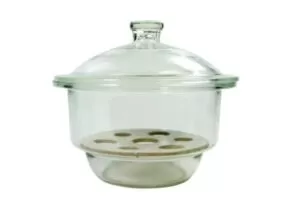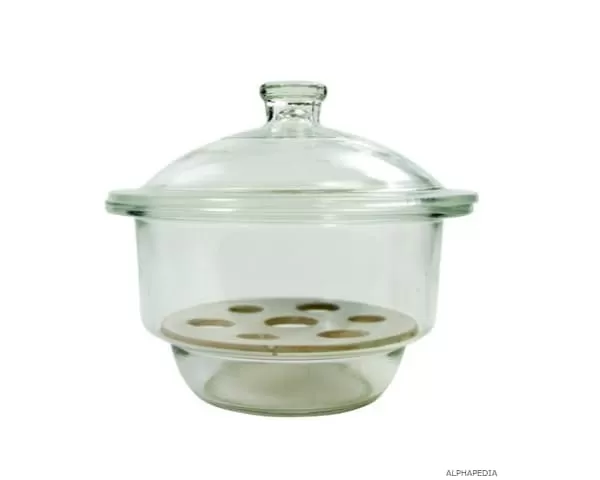What are Laboratory Desiccator ? Definition
A desiccant is a closed glass container containing a desiccant (such as silica gel) used in laboratories to dry materials or to keep them dry. Desiccants (also known as dehydrators or dehumidifiers) are packages to contain desiccants that function as self-contained moisture control systems. They hold the desiccant to protect cabinet contents from moisture damage and are used in a wide variety of aerospace and electronic applications.
There are two basic types of desiccants: dynamic and static. Dynamic desiccator allow a stream of wet gas to flow through the desiccant bed to dry the gas. The more complicated dynamic desiccator regenerate automatically, are generally large and expensive, and require an external power source.
Static desiccator, on the other hand, can vary in size from small packages or capsules to 55 gallon and larger cans filled with desiccant. They are generally much less expensive, but require periodic regeneration or replacement. Desiccants create and maintain dry environments to ensure sample stability.
The use of absorbent balls and other desiccants, desiccant cabinets or devices quickly absorb moisture, ensuring that sensitive materials do not react to the surroundings before the test. Vacuum compatible models accelerate drying of indoor conditions. Desiccator are made of clear materials to allow constant monitoring without exposure and can come in an amber color that blocks UV rays. Reusable desiccants are available in a variety of capacities and can feature attached hygrometers.
Chemistry Lab Desiccator
A laboratory dryer is a pot used to absorb water vapors from chemical reagents that are hygroscopic, which are water-absorbing reagents. This allows the accurate measurement of the chemicals before any reaction occurs and ensures that the proper amount of reagents are used. The most common desiccants used in laboratories are circular and heavy glass. These desiccants have two compartments: a lower compartment that stores a desiccant and an upper compartment where the reagent is placed.
Desiccants are drying agents that are used to ensure that any water vapors still present are absorbed before reaching the reagents. These desiccants are typically made from sodium chloride or silica gel. The reagents inside the desiccant are exposed to water vapor each time the desiccant is opened and require some time before reaching low moisture levels.
Because of this, desiccants are not used in situations where the reagent reacts quickly or violently with water, as is the case with alkaline metals such as sodium. Desiccators are generally sealed from outside air, and some models include a vacuum attachment for greater air evacuation. Samples that are nearly dry are usually placed in desiccators to remove the remaining water vapor. If further drying is required, samples are dried at elevated temperatures using a drying gun.
Characteristics of Desiccator
- There are different types of desiccator with different characteristics and dimensions, however, the desiccator are mainly constituted in a container which is generally made of a resistant glass (soda lime or borosilica glass), plastic or metal. The container is made up of a main body and a heavy lid.
- This lid has a frosted edge which is greased with a fine vacuum grease to seal tightly without any problem. Other models include a silicone ring for a grease-free seal. The shape of the desiccators allows easy removal of the samples contained in them.
- Inside, the desiccator have 2 separate meshes or sieves; the upper mesh will hold the wet material or material to be dried, and the lower mesh has the task of holding the drying agent. The traditional desiccator has a glass dome shape, they are widely used due to their easy handling and great performance. These desiccator are quite practical and useful for simple drying.
- The vacuum dryer is very similar in ergonomics to the traditional ones but they have a valve on the top of the container. This valve allows for accelerated drying. A vacuum pump is needed to extract the desiccator from the inside of the container. Another important model to highlight are the bag desiccator. The bag desiccator have a hermetically sealed bag into which the wet material and the drying agent are introduced in separate containers. Their size is small in comparison to other desiccator.
Function of the Desiccator
The main function of a desiccator is to store dry samples of a substance in a dry atmosphere. It should not be used to dry an object, but to keep an object already dry indefinitely in a dry condition. The purpose of the dryer is to dry a chemical or prevent a chemical from being “wetted” by atmospheric moisture (water in the air).
History and Origin of Desiccator
The origins or roots of dehydration go back to ancient times and civilizations. These civilizations, motivated by the need to store their food, whether it is grains and cereals from their crops or meat from hunting, developed drying techniques for their food so that it could be handled and preserved for a long time.
Dehydration, in food processing, means that many types of food can be preserved for indefinite periods by extracting the moisture, which inhibits the growth of microorganisms. Dehydration is one of the oldest methods of preserving food and was used by prehistoric peoples in sun-dried seeds. North American Indians preserved meat by sun-drying slices, Chinese dried eggs and Japanese dried fish and rice.
Hot air dehydration was developed in France in 1795. Modern dehydration techniques have been greatly encouraged by the advantages dehydration offers in compactness; on average, dehydrated foods have about 1/15 the most of the original or reconstituted product.
The need to transport large shipments of food over long distances during the Second World War provided much of the stimulus to perfect the dehydration processes. Benjamin Thompson, or better known as Count Rumford, (March 26, 1753 August 21, 1814) was an American-born British military man, physicist and inventor.
His great interest and curiosity for heat led him to perform different experiments and to manufacture several gadgets. Among his many inventions was a potato dryer, which worked by putting the potatoes in a closed metal box and keeping them at a low and constant temperature, so that they were heated very slowly (instead of putting them directly on the fire so that they were not cooked). Today’s desiccator are derived from this principle of controlling the internal atmosphere.
Scheibler’s Desiccator
Carl Wilhelm Bernhard Scheibler (1827-1899) German chemist. Description: This is a glass container with a wide, flat mouth and a lid which closes hermetically thanks to its frosted edge. Inside it, a porcelain plate is placed and under it a hygroscopic substance (silica gel, sulfuric acid, etc.) that absorbs the environmental humidity and keeps the samples that are kept inside dry.
What is a Laboratory Dryer For ?
- There are many uses for the dryer in a laboratory, and it can help you in many more ways. Here are some uses you can get, and that’s why they are important. So, the uses of the desiccant are
- The dryer should use common chemicals that are hydrophobic like MgSO4 and all those that react with moisture and water. The use of this is that the desiccant will remove all moisture and never allow any of the water particles to be inside the desiccant.
- This makes it helpful that the chemicals never get wet, and this can help any chemical dry out all day long. This is all you need, and it can help you a lot in the labs.
- However, there are many types of desiccator on the market, and you can easily use them. So, here is the vacuum dryer that can help you generate the vacuum in the container and, like its name, will help you create a vacuum for the desired chemicals.
Using the Desiccators
To open, slide the lid horizontally across the top to one side until it pops out. Use one hand to hold the bottom of the desiccant while using the other hand to grasp the knob. To close: place the lid partially on top and slide it until the desiccant is completely closed, then gently turn the lid in both directions. Do not attempt to lift the lid vertically.
Make sure the lid has enough grease around the frosted glass edge; if necessary, spread petroleum jelly evenly over the edge. When the lid is properly seated, the edge will be greased. If the desiccant appears wet or lumpy, it probably should be replaced with a new desiccant. It is helpful to have a small amount of desiccant indicator present. When the color changes to pink, the desiccant should be replaced. Desiccants should be handled in the hood and added with care, using glasses and lab coat. The desiccant should not cover the sides or plate of the desiccant.
Considerations For Using a Desiccant
- Room temperature reagents and samples (typically powders or crystals) are placed in an open container on top of the ceramic disc and the lid is closed.
- Always place the reagents back into the dryer immediately so they remain dry. Avoid placing hot samples in a desiccator, as they can raise the temperature and cause an increase in the pressure of the trapped air. The lid may be altered by opening the desiccator.
- Be careful when opening and closing the desiccator. The lid is heavy and the grease prevents it from simply being lifted from the bowl. The lid should slide in a slow, steady horizontal motion.
- Just push the lid halfway in, leaving enough room to place or remove your sample. Be sure to always keep one hand on the lid until it is completely closed.
- Removing the lid completely and placing it on the counter will transfer grease to the counter and dirt to the lid, compromising the seal when the lid is replaced on the bowl.
Desiccant Price in Euros and Dollars
- Vacuum dryer with transparent glass laboratory drying equipment. MaxLab 120ML, 150ml, 180ml, 210ml: Price: 63,92
- Empty borosilicate glass desiccant resistant wall with glass stopper 6″. This dehydrator is a clear glass vacuum that includes a vacuum cap, plate and grounding. It has an interior diameter of 180 mm. It is made of borosilicate glass and porcelain. Price: 92,89
- GOWE – Glass dryer for laboratory jars (240 mm, 22.8 cm). Glass desiccator/interior diameter 240 mm, porcelain desiccator plate shown in the photo is included. Without glass vacuum connector and cap. Price: 393,57
- Yantra Science Ware – Vacuum dryer with white polypropylene bottom (300 mm). These automatic vacuum desiccator can contain vacuum up to 740 mm Hg for 24 hours without greasing. The top dome, molded from rigid, transparent polycarbonate, provides a crystal clear view of the desiccant placed inside. The knurled knob in the upper part provides easy handling of the dome, the lower part is made of polypropylene. An internal slot is provided in the flange to hold a silicone rubber ring. The polypropylene cap is equipped with a self-lubricating PTFE plug. Price: 173.02
Plastic Desiccator
These plastic desiccator have a polycarbonate body with a wide and stable base. It includes a polycarbonate cover. It is suitable for vacuum and non-vacuum applications. TPE covers seal the side arms for non-vacuum use. The stopcock can be removed for cleaning.
It is impervious to all solid desiccants, including diluted alkalis and acids. Numbered quadrants provide a reference point for locating crucibles. The plate has six holes in each quadrant and one center hole. They are shatterproof and lightweight for safety and ease of handling. It will not break or implode when used as directed, safer than glass options. If you move the desiccants around the lab between workstations, you will appreciate the difference in weight between a plastic desiccant and its glass equivalent.
Glass Desiccators
Glass desiccator are the most commonly used, their main body and lid are made of toughened glass. Glass stands out for its very good chemical resistance against water, salt solutions, acids, alkalis and organic solvents, and exceeds most plastics in this respect; it is only attacked by hydrofluoric acid and at high temperature by strong alkalis and concentrated phosphoric acid.
Other advantages of glass are its dimensional stability even at high temperatures and its high transparency. Borosilicate glass has very good chemical and physical properties. It is considered the integral technical glass for applications requiring very good chemical and thermal resistance (including resistance to thermal shock) and high mechanical stability. Typical applications are e.g. components for chemical apparatus, round bottom flasks and beakers.
Characteristics of the Glass Desiccator:
Non-Vacuum:
- Smooth Desiccant with knotty lid Borosilicate neutral glass with porcelain perforated plate.
- Robust desiccant bases and lid in borosilicate glass.
- Simple design for drying under atmospheric pressure.
- Frosted glass flanges.
- Sizes: 160 mm, 210 mm, 240 mm, 300 mm diameter.
Empty:
- Vacuum dryer with tubular lid, borosilicate neutral glass stopcock supplied with porcelain perforated plate.
- Designed for vacuum use.
- Robust construction in borosilicate glass.
- Frosted glass flanges.
- Sizes: 160 mm, 210 mm, 240 mm, 300 mm diameter.
Desiccant:
The desiccant is an adsorbent (non-absorbent), that is, it attracts water molecules that adhere to its surface. Unlike absorbents, which change their volume as they take in water, desiccants do not change their volume.
Commonly available desiccants can contain up to a maximum of 35% of their weight in moisture before losing their effectiveness. They work by trapping moisture while it is still in the form of water vapor, before it can condense (become liquid) and cause damage. While desiccants can also absorb water in liquid form, this is usually too late in the corrosion cycle to prevent damage.
Why Use Desiccant ?
Using desiccant to protect the contents of a package, container or enclosure helps reduce or eliminate damage caused by moisture, including mold, corrosion and short circuits. Desiccant is often the most cost effective way to remove moisture, both initially and over extended periods of time.
Desiccant Types
Silica Gel
It can be supplied in bags, in bulk or in desiccator. It is used in moderate to high humidity and/or moderate temperature environments (less than 125° F / 52° C). Maximum capacity is 35% by weight when exposed to 25°C and 80% RH or more.
Molecular Sieve
The crystalline metal aluminosilicate is also available in bags, in bulk or in desiccator. It is used to create very dry environments or in high temperature applications (up to 400° F / 204° C). Available with different microscopic pore sizes, the most common is 4Å (4 angstroms). Maximum capacity is 21% by weight over a wide temperature range.
Activated Alumina
It is available in bulk for high humidity adsorption in high humidity environments. It is an inefficient adsorbent in environments with 40% or less relative humidity (RH). It is normally used in high pressure desiccator or compressed gas. Like silica gel, the capacity is highly dependent on the exposure conditions. Most people use about 7.5% capacity for compressed gas desiccator.
Montmorillonite Clay
Commonly known as bentonite, usually supplied in packages, cans and bags containing from a fraction of an ounce to 5.8 pounds. (80 units) of desiccant. Used in moderate to high humidity and/or moderate temperature environments. It is economical and used for general packaging requirements. It is not suitable for bulk desiccant applications due to its tendency to pack and restrict air flow. Similar to silica gel, the capacity of this material depends on the exposure conditions with a maximum of 26% when exposed to 25°C and 80% RH.
Other Laboratory Materials and Instruments in ALPHAPEDIA
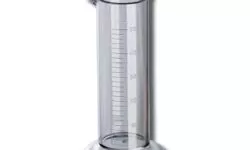
LABORATORY TEST TUBE: Definition, Use and Price
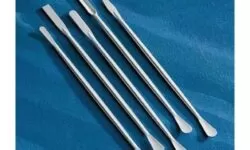
LABORATORY SPATULA USES
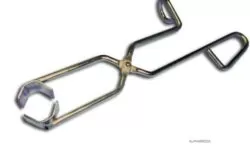
LABORATORY TWEEZER TYPES
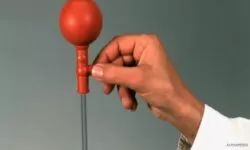
PROPIPETTE PRICE: Prices, Reviews and Offers
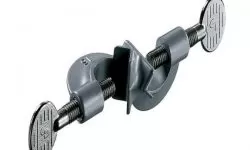
LAB STANDS DOUBLE TOP WIRE CLAMPS Definition

ROMAN SCALE: What is the Roman Scale for Weighing ?
Other Topics of Interest in ALPHAPEDIA

FREE WOODCUT PRINTMAKING COURSE

FREE MASTER DEGREE IN ORTHODONTICS

FREE CERTIFICATE PROGRAM IN CHILD PROTECTION

FREE BACHELOR DEGREE IN PSYCHOMOTRICITY

FREE BACHELOR DEGREE IN BEEKEEPING

FREE HISTORY COURSE
Image and Photo of Laboratory Desiccator
